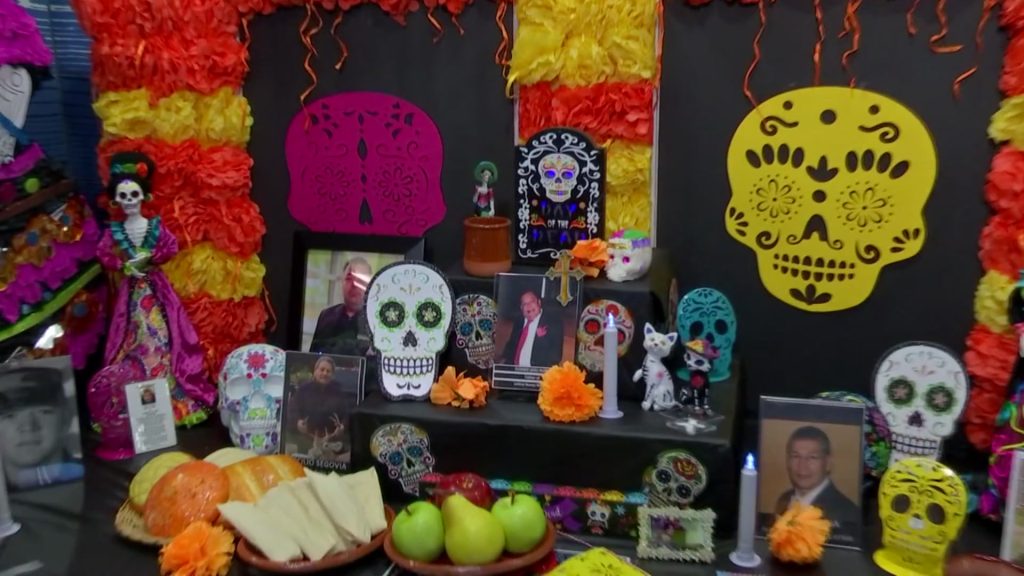The Day of the Dead, or Día de los Muertos, is a vibrant and deeply meaningful celebration that honors the memory of those who have passed away. Rooted in ancient traditions and enriched by contemporary practices, this holiday is a unique blend of indigenous and Catholic influences. Central to this celebration are the altars, or ofrendas, which serve as powerful symbols of love, remembrance, and the enduring connection between the living and the dead.
Creating a traditional Day of the Dead altar is a beautiful way to honor loved ones and embrace the cultural significance of this holiday. Whether you’re celebrating in Mexico or in the United States, understanding the symbolism and components of these altars can help you create a meaningful and respectful tribute.
Understanding the Cultural Significance
The Day of the Dead is more than just a holiday; it’s a time for families to come together and celebrate the lives of their ancestors. The altar is the heart of this celebration, serving as a sacred space where the spirits of the deceased are welcomed back for a brief visit. Each element on the altar carries deep symbolism, reflecting the beliefs, traditions, and values that shape the celebration.
In many communities, the construction of altars has become a collective effort, with neighbors and friends contributing to each other’s offerings. This collaborative spirit not only embodies the essence of community but also emphasizes the belief that death is a shared experience that affects everyone. In this way, the altars symbolize unity and continuity, bridging the gap between the living and the dead.
Key Elements of a Day of the Dead Altar
Creating a traditional Day of the Dead altar involves selecting specific items that hold symbolic meaning. These elements are carefully chosen to honor the deceased and create a welcoming space for their spirits. Below are some of the most common components found in these altars:
1. Marigolds (Cempasúchil)
Marigolds are one of the most iconic elements of the Day of the Dead altar. Known as cempasúchil in Spanish, these vibrant orange and yellow flowers symbolize the sun and are believed to guide the spirits of the deceased back to their altars. The strong scent of the flowers is also thought to attract the souls, allowing them to find their way home.
2. Candles
Candles are another essential component of the Day of the Dead altar, serving as symbols of light that illuminate the path for the deceased. Each candle represents a soul, with the flame symbolizing the spirit’s presence. Traditionally, candles are placed in pairs, with one representing the male and the other the female spirit.
3. Photos and Personal Items
Photos and personal items belonging to the deceased are vital aspects of the Day of the Dead altar. These items serve as a tangible connection to the loved ones being honored, allowing their memory to live on in the hearts of the living. Photographs are often displayed prominently on the altar, showcasing moments from the deceased’s life that highlight their personality, achievements, and the joy they brought to others.
4. Food and Drink
Food and drink play an equally important role in the Day of the Dead altar. Altars are typically adorned with an array of culinary offerings, including traditional foods such as pan de muerto (a sweet bread), sugar skulls, and favorite dishes of the deceased. These offerings serve a dual purpose: they nourish the spirits of the departed and provide a feast for the living who gather to remember and celebrate.
5. Water and Salt
Water and salt are also significant components of the Day of the Dead altar. Water is essential for quenching the thirst of the spirits after their long journey back to the living world. It symbolizes purification and is often placed in a glass or bowl, representing the sustenance that the deceased require. Salt, on the other hand, is a symbol of purification and the preservation of life. It is believed to ward off negative energy and is often placed on the altar as a way to protect the spirits and ensure their safe passage.
Symbolism Behind the Components

Each element on the Day of the Dead altar carries profound symbolism, reflecting the beliefs and values of the community. From the vibrant marigolds that guide spirits home to the carefully placed candles that illuminate their path, every detail contributes to a rich tapestry of remembrance.
- Marigolds: Represent the sun and are believed to guide the spirits of the deceased back to their altars.
- Candles: Symbolize the light of life and the faith of the living that their loved ones will return.
- Photos and Personal Items: Serve as a tangible connection to the loved ones being honored, allowing their memory to live on.
- Food and Drink: Nourish the spirits of the departed and provide a feast for the living.
- Water and Salt: Symbolize purification and protection, ensuring the safe passage of the spirits.
Creating Your Own Day of the Dead Altar
If you’re interested in creating your own Day of the Dead altar, here are some tips to help you get started:
- Choose a Space: Select a quiet and sacred space in your home where you can set up your altar. This could be a table, a shelf, or a dedicated area in your living room.
- Gather Materials: Collect the necessary materials, including marigolds, candles, photos, personal items, food, and water. You may also want to include papel picado (decorative paper banners) and copal incense.
- Arrange the Altar: Begin arranging the elements on your altar, placing them in a way that feels meaningful and respectful. Consider the symbolic significance of each item and how it contributes to the overall design.
- Add Personal Touches: Incorporate personal touches that reflect the life and interests of the deceased. This could include their favorite music, books, or hobbies.
- Light the Candles: Light the candles on your altar to symbolize the light of life and the presence of the spirits.
- Offer Prayers and Reflections: Take time to offer prayers and reflections, honoring the memory of your loved ones and expressing gratitude for their presence in your life.
Conclusion
The Day of the Dead altar is a powerful symbol of love, remembrance, and the enduring connection between the living and the dead. By understanding the cultural significance and symbolic elements of these altars, you can create a meaningful and respectful tribute to your loved ones. Whether you’re celebrating in Mexico or in the United States, the act of creating an altar is a labor of love that strengthens the bonds between the living and the dead.
Author: Maria Lopez
Title/Role: Cultural Historian and Writer
Credentials: Maria Lopez is a cultural historian specializing in Mexican traditions and celebrations. With over a decade of experience in researching and writing about cultural practices, she has contributed to numerous publications and documentaries on the Day of the Dead and its significance.
Profile Link: www.marialopez.com
Meta Title: How to Create a Day of the Dead Altar
Meta Description: Learn how to create a traditional Day of the Dead altar with our complete guide. Discover the symbolism and elements that make this celebration meaningful.
Featured Snippet Optimization:
A traditional Day of the Dead altar includes marigolds, candles, photos, personal items, and food. These elements symbolize the connection between the living and the dead, guiding spirits home and honoring their memory.
Call to Action:
Explore the beauty of the Day of the Dead and create your own meaningful altar today. Stay updated with the latest cultural traditions and celebrations.
URL Slug: how-to-create-day-of-the-dead-altar
Schema Markup:
{
"@context": "https://schema.org",
"@type": "Article",
"headline": "How to Create a Traditional Day of the Dead Altar: A Complete Guide",
"description": "Learn how to create a traditional Day of the Dead altar with our complete guide. Discover the symbolism and elements that make this celebration meaningful.",
"author": {
"@type": "Person",
"name": "Maria Lopez"
},
"datePublished": "2023-10-25",
"image": "https://example.com/day-of-the-dead-altar.jpg"
}
Image Optimization:
–
–
–
–
–











More Stories
US Trending News: How to Claim Your Joy: A Guide to Finding Happiness and Inner Peace
US Trending News: Explore Www.hobbylobby.com: Your Ultimate Guide to the Official Site
When Is Trick Or Treating in 2024: A Complete Guide for Halloween